
During the twentieth century, marriage developed from being an institution of convenience to one of love and romance. Langhamer has called the twentieth century the time of ‘emotional revolution.’[1] This ‘emotional’ culture was due to post-war reconstruction, when a loving family was seen as important in bringing Britain back from the horrors of war.[2] Therefore, ‘love’ became a dominant requirement when choosing future spouses.[3] The Women’s Liberation Movement had a big impact on the institution of marriage, as many of the legislation passed granted women more rights within marriage.[4] In this atmosphere of equality, marriage evolved into being an equal contract. This promise of equality created a more ‘symmetrical’ family, with wives entering the workforce, and husbands becoming more ‘homebound.’[5] However, although marriage developed culturally with new ideas of equality, in reality it was still very male dominated. Vox pop interviews made for the television programmes Midland Montage and ATV Today reveal how it was the ‘wife’ who was expected to maintain a ‘happy marriage.’ In the vox pops, many of the respondents are women because the questions are directed at women. Therefore, it can be argued that ideas on marriage did evolve during the 1960s and 1970s, but wives were still dependent on their husbands.
In this culture of the ‘emotional revolution,’ love held no bounds.[6] As Lane argues, marriage changed from the Victorian ideal of practical partnerships, to the 1960s culture of love and romance.[7] Langhamer’s research shows how marital experts of the 1960s saw ‘love as an increasingly dominant requirement within spousal selection; the factor to which all consideration should give way.’[8] In this atmosphere of love, there was an increase in mixed-race couples. This increase was due to idea that love ‘knows no colour bar.’[9] The 1970 ATV Today item ‘Police Wedding’ is an example of a mixed-race couple who have married for their love.[10] During the fifties and sixties there was hostility towards interracial relationships. As Clive Webb has investigated, during the 1950s mixed-race marriages ‘generated more heat and roused deeper and fiercer passions than any other aspect of the race/colour situation.’ However, unlike the United States during this time, mixed race-couples could and did marry in Britain. By the early 1970s interracial relationships became more accepted because of the ‘emotional revolution’, which led people to marry for love rather than for practical advantages.[11] In the case of the ‘Police Wedding,’ the couple’s marriage is accepted because of love. This acceptance is seen in the way their police colleagues are there to celebrate the newlyweds. The footage presents the couple positively, seen when the camera films their colleagues joking around with them.[12] The fact that this couple’s wedding was reported in the news, suggests mixed-race couples were rare but were slowly becoming more common and accepted by the early 1970s. Yasmin Brown cites a survey conducted in 1963 that revealed interracial marriages had been recorded in 84 of 1,000 church parishes.[13]

In this culture of love and romance, marriage was an unavoidable idea. Langhamer argues that romantic love was increasingly positioned as a key resource upon which post-war selfhood was built.[14] In a Spare Rib article in 1972, ‘Family Everafter,’ Michelene Wandor describes this culture of love in Britain: ‘the whole of our upbringing, education and entertainment lead us to believe that love and marriage do indeed go together like a horse in carriage.’[15] From an early age, especially for girls during this period, marriage was the aim in life. A 1956 marriage survey revealed that 94 per cent of 14-year-old girls and 69 per cent of boys anticipated marrying in the future.[16] This education on love and romance saw more young couples getting married in the 1960s. Langhamer has described this period as the ‘golden age’ of marriage.[17] The 1960 Midland Montage vox pop on ‘Marriage Minded Maidens’ explores marriage at a young age.[18] Interestingly, most of the women who are asked by the interviewer when they would get married say they would wait until they were 21 or 25. There are only two women in the film who were already married at the young age of 18. Although most of them say they would want a career first, it is implied that all the women want to get married. This is suggested in how the questions are directed at women and all of the respondents are women.

Langhamer argues that staying single in this period was widely viewed as a denial of a woman’s destiny of being mother and wife.[19] By 1970 only eight per cent of women aged between 45 and 49 had never been married.[20] The 1977 ATV Today vox pop on a ‘Happy Marriage’ reveals how it was often assumed that women and men in a couple were already married.[21] The interviewer takes a straightforward approach, by asking random people on the streets about their marriage, without knowing if they were married. All of the respondents asked are either in a marriage or have been married. This suggests that during this period marriage was popular due to the culture of ‘love at first sight.’ It also reveals how women were still expected to get married at some point in their lives, although, in the atmosphere of the Women’s Movement, marriage was thought of increasingly in terms of equality.
Equal partnership became the main concept of a modern marriage. As Sandbrook argues, the relationship between spouses began to evolve from living in ‘separate spheres’ to where couples did everything together.[22] Lane’s article ‘Not the Boss of One Another’ argues that this equal partnership developed among all social classes. The working classes developed more middle-class traits due to improvements in housing, shorter working hours and higher wages that contributed to a more home-centred lifestyle.[23] A 1969 ATV Today vox pop item, which asked the question, ‘Does your husband chat you up in the evenings?’, reveals how this equal contract was developing for many people, while for others marriage was still very male dominated.[24] The first respondents, who appear to be upper class, do not expect their husbands to talk to them if they have had a hard day at work, saying, ‘it depends on what sort of day he has had, if he is prepared to talk, I am prepared to listen.’ An older woman has the same response saying that she does not bother anymore, because she does not expect her husband to talk to her after his ‘hard day at work.’ This reveals that for many the wife was still a servant to her husband’s needs. In the 1972 article ‘Family Everafter’ in the feminist magazine Spare Rib, Wandor describes how the new promise of an equal contract in marriage was appealing, but realistically it does not work, ‘because of the woman’s economic and psychological dependence on her husband, she is sexually dependent, continuing to need and want his approval’.[25] The ATV footage and the article reveal that, even by 1972, equality within marriage had not fully developed for all British couples. However, the vox pop does present a woman who has equal status to her husband. This sense of equality is seen in her response, as she says she would be depressed and upset if her husband refused to talk to her, and if he did she would know something was up.[26] Therefore, it can be said that the ideal marriage in the 1960s and 1970s was based on the concept of equal partnership. However, in reality, the husband was still the dominant figure in many families.
By the 1960s, the working wife began to develop within a modern marriage. McCarthy argues that the working wife became part of the culture of equality.[27] This change in marriage has been described by Langhamer as the ‘democratisation of love.’[28] McCarthy has studied how sociologists at the time argued optimistically that the employment of ‘wives strengthened marriage through the material security guaranteed by a second wage and by building a greater commonality of interest between spouses’.[29] In the ATV Today footage of the ‘Police Wedding’ the couple have a shared interest, both being police officers.[30] The 1978 Daily Mail article ‘Happiness is a Working Wife’ looked into the benefits of a married woman working, suggesting that ‘she is more fulfilled, independent and interesting for her husband and children’. The article cites Professor Robert Rapoport in persuading the reader on the benefits of married women working, with the conclusion being that it prevented ‘boredom building up into marital violence and stress and led to a more harmonious married life.’[31]
The 1960 Midland Montage vox pop on ‘Marriage Minded Maidens’ reveals how in the early 1960s the idea of the ‘working wife’ had not yet fully developed.[32] This is presented in how many of the women say they want to have a career first before entering marriage. One woman explains how she has been studying for seven years and does not want to give it up and would rather be in a good position and in a good job before thinking about marriage. As Sandbrook has investigated, in the 1950s and into the early 1960s working wives were said to be selfish and unnatural for putting their own ambitions above the needs of their children and husband.[33] The 1960 vox pop reveals how this idea of working wives being ‘selfish’ was still present, with many of the women choosing to have a career while they remain unmarried.

In the atmosphere of the Women’s Liberation Movement of the 1970s, there was an increase in ‘working wives’. In 1971, 52.6 percent of women worked in Britain; by 1979 this increased to 56.9 percent.[34] However, although more than half of women aged between 16 and 64 were now working by the end of the 1970s, women were still economically dependent on their husbands. The Spare Rib 1972 article ‘Family Everafter’ argues that ‘most women […] are either totally or partially dependent on their husbands. If they work they are either paid at a lower rate, have jobs of a lower status or work part-time, thus earning an income secondary to their husbands.’[35] This article suggests that even if a wife was able to work she would still be dependant on her husband. As Sandbrook and McCarthy have investigated, many men still wanted their wives to stay at home and look after them and the children.[36]
The ‘sexual revolution’ has been iconic in the study of the 1960s. As Brown argues, the 1960s marked an important decade in the ‘long sexual revolution’, manifested in ‘radical sexual behaviour’ amongst the unmarried.[37] The talk of ‘sex’ became central to 1960s culture. This focus on sex is seen in the introduction of the contraceptive pill for married women in 1961.[38] The introduction of the pill, meant married women could enjoy sex without the risk of falling pregnant every time. For marriage experts, the satisfaction of both spouses was equally important in the making of a happy marriage. Akhtar and Humphries argue that sexual expectation was high; a marriage without good sex was not a happy marriage.[39] After the Divorce Reform Act of 1969, there was a huge increase in divorces. By 1978 one in three marriages had ended in divorce.[40] The rise in divorces saw the rise of paranoia around the institution of marriage. The 1977 Daily Mail article ‘I Thee Wed… Till My Next Love Do Us Part’ shocks the reader with claims like, ‘Divorces last year rose by more than 6,000 to a total of 126,700.’[41] Strimpel argues that by 1980 there was a rise of single people, which was due to the rise of divorcees.[42] The paranoia over the institution of marriage that resulted saw an increase in advice within the media on how to save a marriage. Amongst marital experts, good sex was the main component in saving marriages from divorce.

In the ATV Today vox pop on a ‘Happy Marriage’, the theme of good sex is in question after the publication of the book Total Joy.[43] The interviewer asks the people of Birmingham, ‘should wives phone up their husbands and say that they want their bodies?’ Interestingly, the question insinuates that ‘wives’ should take more of a role in maintaining a good sex life for the benefit of their marriage. This sense in inequality in the question is mentioned by two of the women, one saying, ‘Well, it’s okay if they want to, but it would be good if the man did the same as well.’ The last woman asked, mentions that she is about to get divorced, which changes the subject of the question to, ‘do you think if you rang up your husband at work saying that you wanted his body, would have made a difference.’ The inequality of the question is highlighted as the woman responds, ‘No, definitely not. But if he’d done that to me, that might have done.’ This interview reveals that although the question asked exposes the inequalities in marriage, it does reveal that by 1977 many women expected their husbands to take an equal responsibility in maintaining a happy marriage.

In conclusion, the ideas of marriage began to evolve during the 1960s and 1970s. For many married couples during these decades, marriage was meant to be founded on love. The footage of the ‘Police Wedding’ reveals how love held no bounds.[44] New ideas on marriage made it unavoidable, especially to women, during the 1960s. Women were now promised that they would have equal status to their husbands.[45] Although it can be said that ideas about marriage evolved during these decades, in practice it was still very male dominated. The vox pops and Spare Rib article reveal how the survival of marriage was down to women. The questions asked are always directed at women, meaning many of the respondents in the vox pops are women. By the time of the 1977 vox pop on a ‘Happy Marriage’, it is possible to see the evolution of equality, especially on the subject of sex. Wives now expected their husbands to take on equal responsibility in maintaining a happy marriage.
Notes:
[1] Claire Langhamer, The English in Love: The Intimate Story of an Emotional Revolution’ (Oxford, 2013), 1.
[2] Laura King, Family Men Fatherhood and Masculinity in Britain, c. 1914-1960 (Oxford, 2015), 89.
[3] Langhamer, English in Love, 25
[4] King, Family Men, 123.
[5] Helen McCarthy, ‘Women, Marriage and Paid Work in Post-war Britain,’ Women’s History Review, 26:1 (2017), 45-52 (47).
[6] Clive Webb, ‘Special Relationships: Mixed-race Couples in Post-war Britain and the United States,’ Women’s History Review, 26:1 (2017), 110-129 (111).
[7] Margaret Lane, ‘Not the Boss of One Another: A Reinterpretation of Working-Class Marriage in England, 1900 to 1970,’ Cultural & Social History, 11:3 (2014), 441-459, (442).
[8] Langhamer, English in Love, 25.
[9] Webb, ‘Special Relationships,’ 111.
[10] ATV Today, ‘Police Wedding’ (ITV, 9/7/1970), Media Archive for Central England (hereafter MACE), University of Lincoln, http://www.macearchive.org/films/atv-today-09071970-police-wedding.
[11] Webb, ‘Special Relationships,’ 112-114.
[12] ATV Today, ‘Police Wedding’.
[13] Webb, ‘Special Relationships,’ 114.
[14] Claire Langhamer, ‘Love, Selfhood and Authenticity in Post- War Britain,’ Cultural & Social History, 9:2 (2012), 277-297 (278).
[15] Michelene Wandor, ‘Family Everafter,’ Spare Rib, 5 (1972), 10.
[16] Langhamer, English in Love, 91.
[17] Langhamer, English in Love, 4.
[18] Midland Montage, ‘Marriage Minded Maidens’ (ITV, 21/1/1960), MACE, University of Lincoln, http://www.macearchive.org/films/midland-montage-21011960-marriage-minded-maidens.
[19] Langhamer, English in Love, 4.
[20] Langhamer, English in Love, 4.
[21] ATV Today, ‘Vox Pops on a Happy Marriage’ (ITV, 16/2/1977), MACE, University of Lincoln, http://www.macearchive.org/films/atv-today-16021977-vox-pops-happy-marriage.
[22] Dominic Sandbrook, White Heat: A History of Britain in the Swinging Sixties (London, 2006), 688.
[23] Lane, ‘Not the Boss of One Another,’ 441.
[24] ATV Today, ‘Marriage Vox Pops’ (ITV, 20/5/1969), MACE, University of Lincoln, https://vimeo.com/139694716 (log-in required).
[25] Wandor, ‘Family Everafter,’ 10.
[26] ATV Today, ‘Marriage Vox Pops’.
[27] McCarthy, ‘Women, Marriage and Paid Work’, 46.
[28] Langhamer, English in Love, 3.
[29] McCarthy, ‘Women, Marriage and Paid Work’, 47.
[30] ATV Today, ‘Police Wedding.’
[31] Antony Smith, ‘Happiness Is a Working Wife,’ Daily Mail, 16 February 1978, 3.
[32] Midland Montage, ‘Marriage Minded Maidens’.
[33] Sandbrook, White Heat, 694
[34] ‘Female Employment Rate (aged 16 to 64, seasonally adjusted)’, Office of National Statistics, https://www.ons.gov.uk/employmentandlabourmarket/peopleinwork/employmentandemployeetypes/timeseries/lf25/lms.
[35] Wandor, ‘Family Everafter,’ 10.
[36] Sandbrook, White Heat, 695; McCarthy, ‘Women, Marriage and Paid Work’.
[37] Callum Brown, ‘Sex, Religion, and the Single Woman c. 1950-75: The Importance of a “Short” Sexual Revolution to the English Religious Crisis of the Sixties,’ Twentieth Century British History, 22:2 (2011), 189-215 (190).
[38] Miriam Akhtar and Steve Humphries, The Fifties and Sixties: A Lifestyle Revolution (London, 2002), 177.
[39] Akhtar and Humphries, Fifties and Sixties, 174, 186.
[40] John Stevenson, ‘I Thee Wed… Till My Next Love Do Us Part,’ Daily Mail, 7 July 1977, 3.
[41] Stevenson, ‘I Thee Wed’, 3.
[42] Zoe Strimpel, ‘Computer Dating in the 1970s: Dateline and the Making of the Modern British Single’, Contemporary British History, 31:3 (2017), 319-342 (323).
[43] ATV Today, ‘Vox Pops on a Happy Marriage.’
[44] Webb, ‘Special Relationships,’111.
[45] McCarthy, ‘Women, Marriage and Paid Work’, 47.





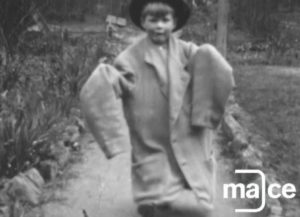







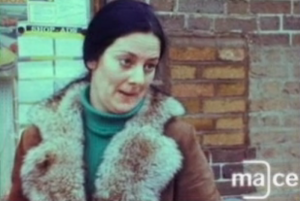
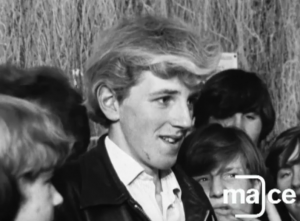
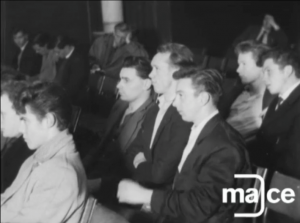

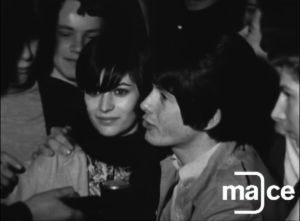
You must be logged in to post a comment.